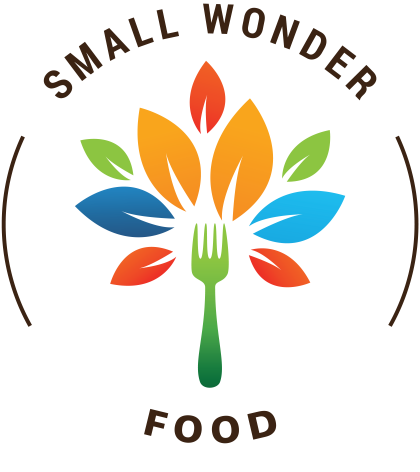 Fall is here and so are new flavors. It’s not all about pumpkin spice. Fall and winter have their own seasonal produce. I am a huge proponent of eating seasonally. Depending on where you live, you may be thinking that there is not much on offer right now. Despite the weather, there are many winter vegetables in season. That includes the brassica family of vegetables. Brassicas include cabbage, broccoli, Brussels sprout, cauliflower, kohlrabi, kale, bok choy, and more. These vegetables have many healthy properties, but their sulfur content is the standout nutrient you have probably never heard of. In fact, sulfur is what gives all those vegetables their pungent smell.
Fall is here and so are new flavors. It’s not all about pumpkin spice. Fall and winter have their own seasonal produce. I am a huge proponent of eating seasonally. Depending on where you live, you may be thinking that there is not much on offer right now. Despite the weather, there are many winter vegetables in season. That includes the brassica family of vegetables. Brassicas include cabbage, broccoli, Brussels sprout, cauliflower, kohlrabi, kale, bok choy, and more. These vegetables have many healthy properties, but their sulfur content is the standout nutrient you have probably never heard of. In fact, sulfur is what gives all those vegetables their pungent smell.
Sulfur is vital to your health for many reasons. It is the most abundant mineral element in our body after calcium and phosphorus. It is an important building block of some proteins—helping to form everything from muscle to connective tissue and even your skin. It is sulfur’s critical role in detoxication and halting cellular damage that is not given enough attention. Glutathione is the master detoxifier of the body, and your bodies manufacture it (if you provide the raw materials.) One of those critical raw materials is sulfur. Glutathione is so powerful because of the sticky sulfur it contains. Free radicals (the “bad guys” that cause cellular damage) stick to the sulfur and glutathione disarms the intruder.
Sulfur’s role in detoxication cannot be overstated. Consuming plenty of sulfur helps you keep glutathione levels high. It is an important part of your body’s defense against everything from colds to cancer. Glutathione is being studied as both a defense against and treatment for covid-19. Some researchers theorize that the increased severity of covid-19 in older individuals is in part due to lower glutathione levels. Poor diets and the aging process both slow down glutathione production and leave you at risk for chronic health issues like cardiovascular disease, chronic fatigue, and neurological disorders.
Sulfur supplementation has not yet shown clear results. What is clear is that eating high-sulfur foods throughout your day does have a wonderful synergistic effect. Sulfur has the power to not only defend your body and brain, but to boost your energy and even improve your complexion. Those in-season brassicas are powerful and delicious medicine. Glucosinolates, the sulfur containing molecules found in brassicas have been shown in studies to prevent amyloid beta-induced oxidative damage that forms in neurodegenerative disorders like Alzheimer’s.[1]
Sulfur is an essential nutrient meaning your bodies cannot make it. You must ingest it. The cold weather brassicas I mentioned above are great sources but so are meat and poultry, seafood, alliums (onions, leeks, garlic, shallots, etc.), mushrooms, asparagus, eggs, beans, nuts, and dairy. My suggestion is to eat 2-3 servings a day of sulfur-rich produce. Winter is a great time to get into that habit since they are in season and at their peak of flavor.
I want to leave you with a few ideas to get more sulfur-rich brassicas onto your plate.
- Use your food processor to quickly shred Brussels sprout. Then use them to make coleslaw or a quick sauté (try them with some bacon and apple!)
- Use raw cauliflower to make a cauliflower-based tabbouleh (see my recipe below)
- Toss broccoli and/cauliflower in olive oil and desired spices on roast on a sheet pan. Freeze in meal-sized portions for a quick side dish.
- Add frozen kale to anything and everything. It’s a great addition to soups, casseroles, hashes, and skillet meals.
Small Wonder Food Cauliflower Tabbouleh
 Serves 4 as a side dish
Serves 4 as a side dish
- 2 cups raw riced cauliflower
- 1/2 cup raisins
- 1/3 cup chopped green onion
- Fresh lemon juice from 1 lemon and it’s zest OR 1 whole preserved lemon plus brine
- 2 tablespoons EVOO
- 1/3 cup finely chopped parsley
- 1/3 cup finely chopped cilantro
- 1/3 cup sliced almonds
- Sprinkle of nutritional yeast (This inactive yeast adds a cheesy, zesty flavor, is very high in B vitamins and contains fiber, zinc, and protein).
- Salt and pepper to taste
Combine everything except almonds. Add almonds as a garnish when serving to preserve their crunch. This salad improves with time so making a day or two ahead is a good idea!
Ideas for other additions: cucumber, dried cranberries, seaweed flakes, Gomasio Seasoning, red onion, shredded carrot, fresh basil, etc.
[1] Jaafaru, Mohammed Sani, et al. “Protective Effect of Glucosinolates Hydrolytic Products in Neurodegenerative Diseases (NDDs).” Nutrients, vol. 10, no. 5, 8 May 2018, www.ncbi.nlm.nih.gov/pmc/articles/PMC5986460/, 10.3390/nu10050580.
